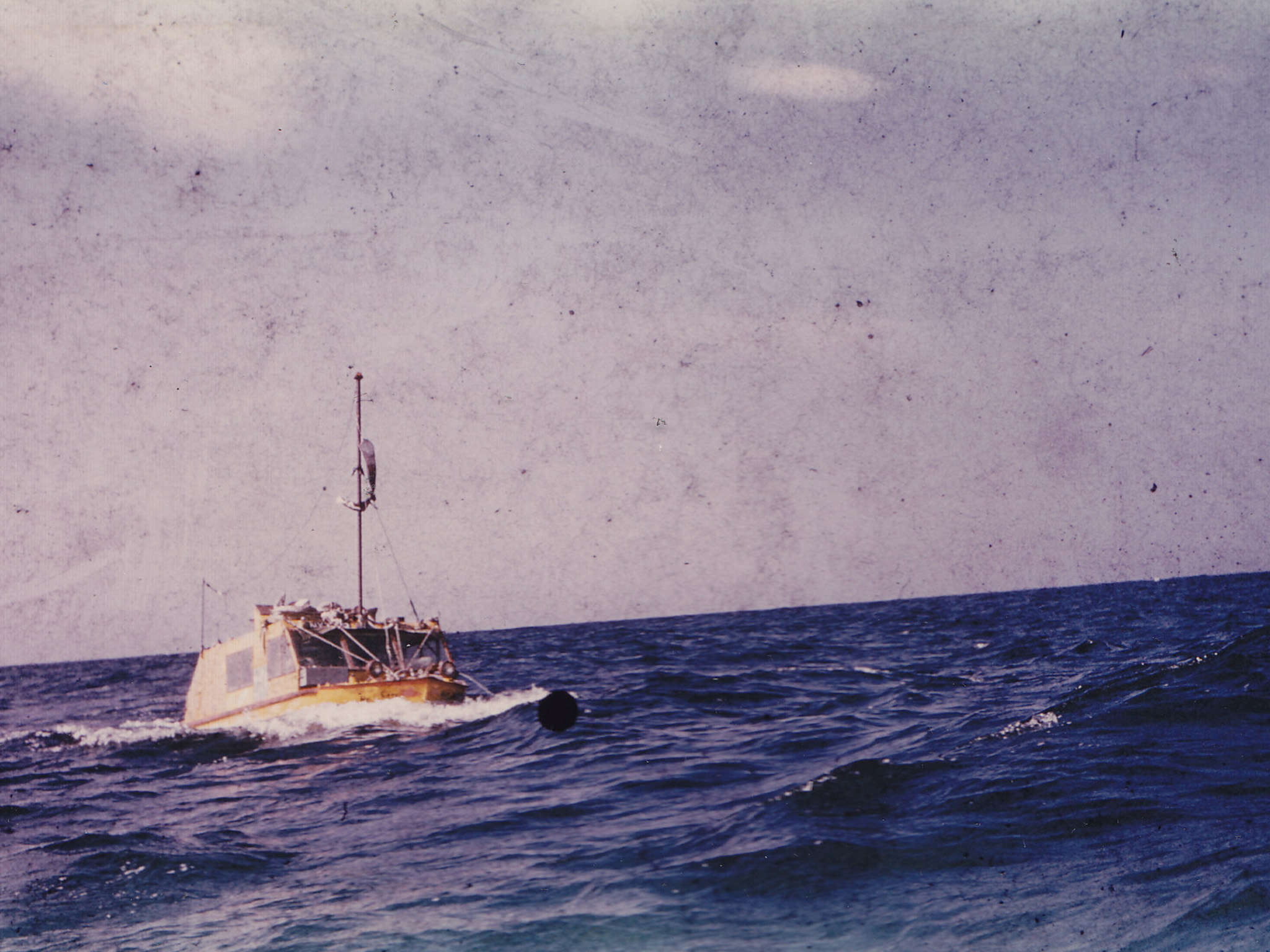There’s nothing like driving on the open road, but if you drive far enough all roads come to an end. Even with the most rugged off-road setup, there are certain places that are out of reach of a standard vehicle—or so it would seem. In the history of automotive engineering, where many have seen unyielding obstacles (mountains and bodies of water, for example) a handful of enterprising car nuts found a way to drive there. Here are some of the most notable instances of cars going where cars don’t go.
The Porsche That Climbed 22,000 Feet
Back in 1953 the first recorded summit of Mount Everest took place, and there was officially no higher place for mankind to climb. For cars, on the other hand, there were still plenty of peaks to conquer. Although hill climb racers have been zooming up mountain roads since the late 19th century, driving up a mountain that has no road is something different entirely.
Last December, the record for highest altitude attained by a vehicle was set by French driver Romain Dumas, who has won Le Mans twice and also holds the record for the Pikes Peak Hill Climb. According to a report by Car & Bike, Dumas drove a customized Porsche 911 Carrera 4S up the west ridge of a Chilean volcano—which happens to be the tallest volcano in the world—to set the record.
The vehicle sported a stock 3.0-liter flat-6 engine, but its 7-speed transmission was tuned according to the challenge at hand. Because the uphill climb was going to demand different kinds of throttle inputs than road driving, the gear ratios were lowered, and the engines were powered by synthetic fuel.
The car was also fitted with custom axles to provide an additional 350mm of ground clearance to help get it over the large rocks on the mountainside as it climbed. The mechanics also changed the way the steering system worked, installing a steer-by-wire mechanism that used electric components and motors instead of a physical connection between the steering wheel and front tires.
Climbing up to 22,000 feet causes quite a bit of harm to the underside of a car, and so armoring was installed made out of a synthetic polyamide found in firefighting gear and body armor. The seats were also replaced with lighter carbon fiber ones, and other interior features were removed altogether for weight savings. In the end the 911 gained the west ridge of the volcano—an altitude of 6741 meters—on December 2, 2023, outdoing the previous record that had been set on the same volcano in 2020 by just under 50 meters. Of course, all record were made to be broken, and it could be just a matter of time until the next car climbs even higher.
The Car That Sailed Around the World
In a way, the history of cars being used as watercraft predates the history of cars in general. Conestoga wagons were crossing rivers and streams in the US and Canada in the 18th and 19th centuries, and in some cases this would require them to float for a period of time. But the first known designs for self-propelled vehicles capable of managing both land and water appeared in the early 19th century, such as the Orukter Amphibolos, a steam-powered dredging barge, which also had two wheels but was not necessarily proven to have driven on land.
In the 20th century there were those older ‘68 and up VW beetles that, when the car was new, would float in places where just about any other car would sink. They could do this because of the way the body bolts to the floor pan on those models.
Older bugs have been seen floating from one side of a flooded underpass to the other and then getting traction once they found pavement on the other side. This was not something they were engineered to do, but they would float until the floor pan rusted out under the back seat where the battery sits (and it always did).
The idea of amphibious vehicles continued to develop and be employed in designs with varying levels of success, but it was not much more than a novelty before the demands of World War 2 created practical need for vehicles that could cross large bodies of water. Although a number of tanks and armored vehicles could handle water crossings, two vehicles invented during the war stand out as really serving the purpose of both car and boat. One was the German-made Volkswagen Schwimmwagen, or “swimming car,” and the other was a version of the early Jeep, known as the Ford GPA ‘Seep’ (or sea Jeep).
The war called for a lighter vehicle capable of floating and crossing water under its own power, and because Ford was already helping to produce the first Jeeps, rugged vehicles that could handle any terrain and ford across shallow water, they modified the design to create the GPA. Although deployed at the invasion of Sicily, North Africa, and various parts of the Pacific Theater, the GPA was not considered a success during the war and only about 12,000 were ever made. The vehicle was heavy and slow on land, and did not manage well in turbulent open water, and so was never considered as reliable as its counterpart the Jeep.
But where others saw a heavy, half-boat half-car that served neither role particularly well, Ben Carlin saw a vehicle to circumnavigate the globe with. Carlin outfitted the GPA with a new bow that would be better of oceangoing, a larger fuel tank, and a custom-built cabin among other extensive modifications. He sought sponsorship from Ford for the project but the company declined on the basis that they did not think the vehicle could manage an ocean crossing. After several failed attempts, however, Carlin and his wife did manage to sail the GPA, dubbed ‘Half Safe’ across the Atlantic ocean in 1950. They first landed on the Azores and then steered toward the Canary Islands, then Morocco.
After this the Carlins drove through Europe and crossed the English Channel in Half-Safe. Once their European tour was over they made their way east and crossed the middle east before arriving in Calcutta. Half-Safe would go on to cross Myanmar and China, the South China Sea, and Japan before heading northeast across the Pacific Ocean bound for the Aleutian islands. Once there, Carlin followed the island chain to mainland Alaska and then drove east across the continent to make it back to where he’d set out from—Montreal.
All told Half-Safe crossed 11,050 miles by sea and 38,987 by land, covering 38 countries and two oceans.
Flying Cars
In 1940 Henry Ford predicted that the popularization of flying wars was inevitable, and for years it’s been considered a cultural benchmark that would finally let us know we’d arrived in the future. Although many prototypes of cars that can also fly (sometimes called ‘roadable aircraft’) have been created, the phenomenon has never become widespread. Is it still only a matter of time before our cars can also take to the air? Is this the final frontier of places cars can’t go?
One of the earliest models of flying car the Waterman Arrowbile, developed by Waldo Waterman in the 1930s. The fact that one car had successfully flown before probably helped Mr. Ford feel more assured in his conviction that flying cars were on their way. The Arrowbile was a tailless aircraft with a pusher propeller and detachable wings, allowing it to transition between flying and driving. It was powered by a Studebaker engine and could reach speeds of 120 mph in the air and 70 mph on the ground. Despite its innovative design, only five Arrowbiles were ever built, primarily because of high costs and practicality issues, such as the need for a runway to take off and land.
The challenges faced by the Arrowbile have persisted throughout the history of flying cars. Despite numerous attempts to create a commercially viable flying car, several factors have hindered widespread adoption. Technical challenges, safety concerns, regulatory and legal issues, and the immense costs associated with research, development, and production have all posed significant obstacles. Additionally, the complexity of operating a vehicle that can navigate both the roads and the skies requires pilots’ training, further complicating the practicality for everyday use.
In recent years, however, advancements in technology have revived interest in flying cars. Several companies are developing models with the hope of overcoming past difficulties. For example, Terrafugia, a subsidiary of Geely (owner of Volvo), has been working on the Transition, a light sport, roadable aircraft that has made significant strides towards practical use. Another notable venture is the AeroMobil, a Slovak company that has developed a car capable of transforming from an automobile to an aircraft in less than three minutes.
The latest developments often incorporate electric and hybrid propulsion systems, vertical take-off and landing (VTOL) capabilities, and autonomous flying technology, addressing some of the earlier safety and operational challenges. Companies like Uber Elevate have even explored the concept of flying taxis to alleviate urban congestion. However, while the technology has progressed substantially, flying cars still face regulatory hurdles and must prove their safety and efficiency before they can become a common sight in our skies.
—
Whether or not they become commercially viable, cars have been pushing the limits of the terrain they could be driven over since the earliest days of automotive innovation. With mountains, oceans, and skies conquered the only question that remains is where will they go next? Are submarine cars diving to the ocean floor in our future? Or might there be a type of car that’s capable of burrowing underground? We’re waiting with bated breath to find out where we’ll be driving as technology advances.





